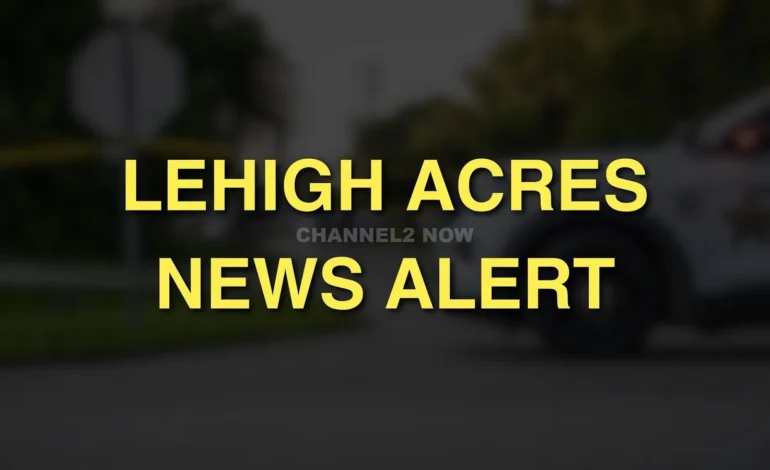
Lehigh Senior High School: Medical Emergency at Lehigh Senior High School Declared a Level 3 Mass Casualty Incident; Over 20 Students Affected During JROTC Drill Amid Intense Heat Conditions
Lehigh Senior High School: Medical Emergency at Lehigh Senior High School Declared a Level 3 Mass Casualty Incident; Over 20 Students Affected During JROTC Drill Amid Intense Heat Conditions
Lehigh Acres, Florida – A Level 3 Mass Casualty Incident (MCI) was declared at Lehigh Senior High School on Thursday afternoon after more than 20 students suffered heat-related injuries while participating in a Junior Reserve Officers’ Training Corps (JROTC) drill. Emergency responders from the Lehigh Acres Fire Control and Rescue District and Lee County EMS arrived promptly to provide medical attention, transporting several students to local hospitals for evaluation and care.
Although the term “Mass Casualty Incident” might evoke concerns of large-scale violence or fatalities, officials have emphasized that this situation was strictly medical and related to extreme heat conditions. Fortunately, no fatalities have been reported, and authorities are working to understand how the incident unfolded to prevent future occurrences.
Incident Overview: What Happened?
The emergency unfolded during an outdoor JROTC training session on the school’s football field. The students were reportedly engaged in a series of drills, which involved physical activities under the intense Florida heat. Eyewitnesses stated that some students began to show visible signs of distress, such as dizziness, excessive sweating, and fatigue. As the activity progressed, others reportedly collapsed, prompting immediate concern from supervising staff.
By the time emergency services arrived, over 20 students required medical attention for symptoms ranging from dehydration and heat exhaustion to more severe cases of heatstroke. Several students were treated on-site by paramedics, while others were transported to nearby hospitals for more intensive care.
The Lehigh Acres Fire Control and Rescue District classified the event as a Level 3 Mass Casualty Incident, a designation used when five or more individuals require simultaneous medical attention. This categorization ensures a coordinated emergency response involving multiple agencies and resources.
Response by Emergency Services
Emergency services responded swiftly, with multiple ambulances and rescue vehicles dispatched to the school. Upon arrival, paramedics established a triage area to assess the condition of affected students and prioritize treatment based on the severity of their symptoms.
Several students were treated on-site using intravenous fluids and cooling measures, including ice packs and cold compresses. Those with more severe symptoms were transported to area hospitals, including Lehigh Regional Medical Center and Golisano Children’s Hospital of Southwest Florida.
Fire Chief Ben Fennell of the Lehigh Acres Fire Control and Rescue District commended the rapid response of his team and Lee County EMS. “Our crews acted swiftly to stabilize the situation and provide the necessary care to these young individuals. The safety and well-being of the students were our top priorities,” Fennell said.
Understanding a Mass Casualty Incident (MCI)
Officials have clarified the term “Mass Casualty Incident” to alleviate public concerns. In emergency response terminology, an MCI is declared when the number of patients exceeds the resources immediately available to handle them. It does not imply fatalities or catastrophic injuries but instead ensures that the response is scaled to meet the demands of the situation.
“It’s important for the community to understand that declaring an MCI is a procedural step to ensure we can provide effective care to everyone affected,” explained Chief Fennell.
Florida’s Heat: A Perennial Risk Factor
Florida’s subtropical climate, characterized by high temperatures and humidity, poses a consistent risk of heat-related illnesses, particularly for those engaging in strenuous outdoor activities. Heat-related illnesses can range from mild conditions like heat cramps and dehydration to severe and life-threatening conditions like heatstroke.
Contributing Factors:
- High Heat Index: The combination of heat and humidity creates a heat index that often feels hotter than the actual temperature. On Thursday, the heat index in Lehigh Acres was reported to be over 100°F.
- Prolonged Exposure: The JROTC drills reportedly involved extended periods of physical exertion in direct sunlight, increasing the likelihood of heat-related issues.
- Inadequate Hydration: Preliminary investigations suggest that some students may not have been sufficiently hydrated, a key factor in preventing heat-related illnesses.
Dr. Angela Martinez, a local emergency physician, highlighted the importance of recognizing early signs of heat exhaustion. “Fatigue, dizziness, and excessive sweating are warning signs. If untreated, these can quickly escalate to heatstroke, which is a medical emergency,” she said.
Parental Concerns and School Communication
Understandably, news of the incident spread quickly, leading to concern among parents and guardians. The school administration has assured families that the situation is under control and that all affected students are receiving appropriate care.
Principal William Turner released a statement emphasizing the school’s commitment to student safety. “We are deeply concerned about the health of our students and are working closely with emergency responders to ensure their well-being. Moving forward, we will review our protocols to prevent such incidents in the future,” he said.
Parents were advised to contact the school for updates and were provided with a dedicated hotline for inquiries about their children’s condition.
Community Reaction and Support
The local community has rallied in support of the affected students and their families. Local businesses and organizations have offered resources, such as bottled water and cooling equipment, to assist the school in future activities.
“Heat-related emergencies are a reminder of how important it is to look out for one another,” said Lisa Carter, a Lehigh Acres resident and parent of a student at the school. “I’m grateful for the quick response of the paramedics and for the community coming together.”
Preventing Future Incidents: Lessons Learned
As the incident continues to be reviewed, officials and educators are already discussing steps to prevent similar emergencies. Key areas of focus include:
- Heat Safety Protocols:
- Revising activity schedules to avoid peak heat hours.
- Implementing mandatory water breaks during outdoor exercises.
- Providing shaded areas for rest and recovery.
- Education on Heat-Related Illnesses:
- Training staff and students to recognize early symptoms of heat exhaustion and heatstroke.
- Incorporating heat safety lessons into the JROTC curriculum.
- Improved Communication:
- Establishing real-time monitoring systems to assess weather conditions during outdoor events.
- Enhancing parent communication during emergencies through text alerts and social media updates.
Ongoing Investigation and Next Steps
Authorities have confirmed that the incident was purely medical and not related to violence or criminal activity. However, they are conducting a thorough investigation to determine whether any procedural lapses contributed to the situation.
The Lee County School District has announced plans to conduct a comprehensive review of its policies regarding outdoor activities in extreme weather conditions. This review will involve consultation with medical professionals and emergency response experts.
In the meantime, JROTC activities at Lehigh Senior High School have been temporarily suspended, and additional safety measures will be implemented before they resume.
Conclusion: A Wake-Up Call for Heat Safety Awareness
Thursday’s heat-related incident at Lehigh Senior High School serves as a sobering reminder of the dangers posed by Florida’s extreme weather conditions. While the prompt response of emergency personnel helped avert a greater tragedy, the event underscores the need for proactive measures to protect students engaging in physical activities.
As the community reflects on the incident, there is hope that the lessons learned will lead to stronger safety protocols and a renewed commitment to student well-being. In the words of Chief Fennell: “This was a challenging day, but it’s also an opportunity to ensure something like this never happens again.”
Authorities will continue to provide updates as more details emerge, and the community remains united in supporting the affected students and their families.



